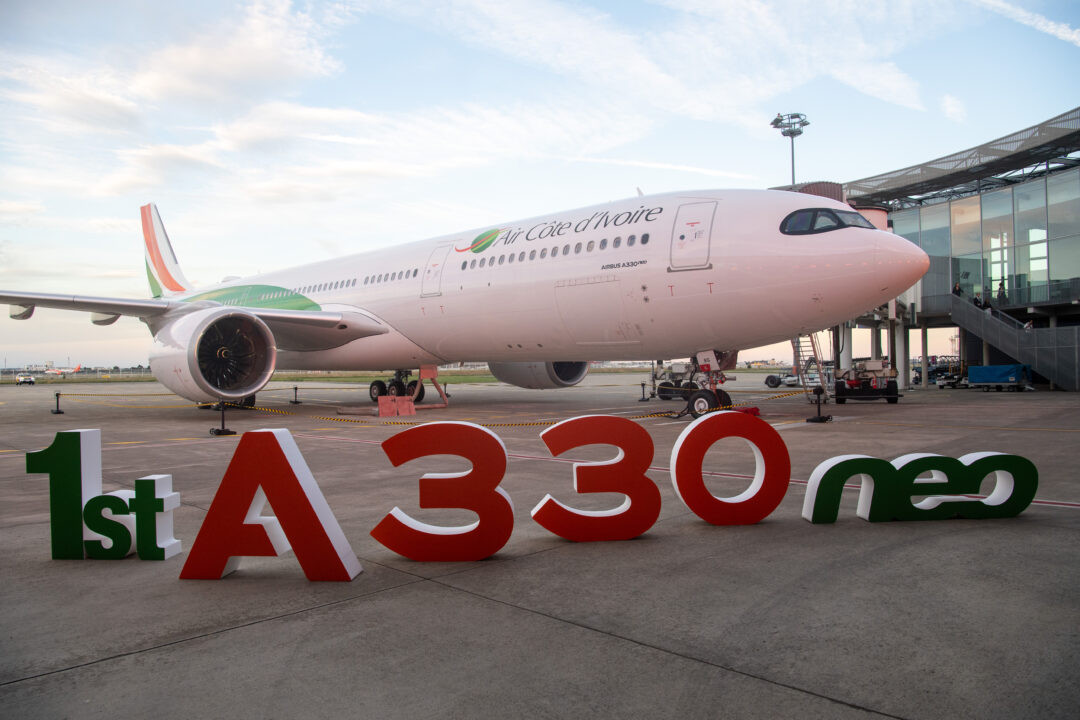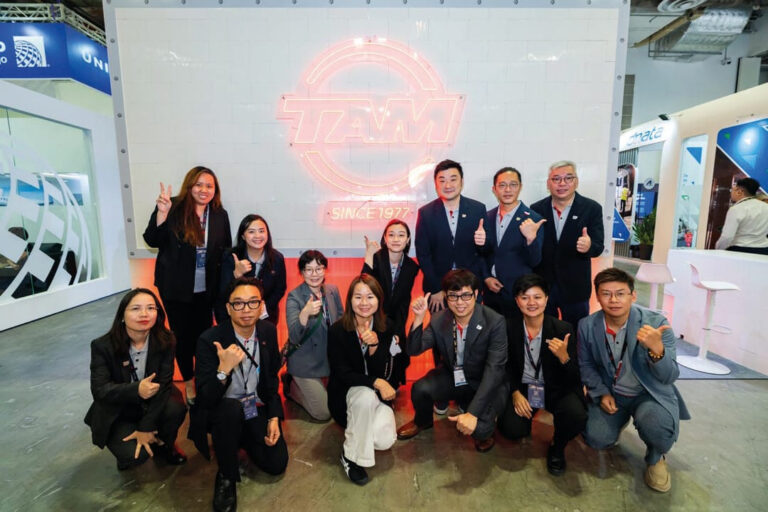
- The delivery of the first Airbus A330-900no from Air Côte d’Ivoire, which represents its entry into the WideBody Market and indicates West Africa’s increasing ambitions in international aviation and air cargo.
- With 20 tons of abdominal charging capacity per flight, the plane reinforces the Abidjan site as a regional commercial center, linking West Africa directly
- Côte d’Ivoire, one of the fastest growing economies in Africa (expected 6.5 percent of GDP in 2025), will benefit from improved exports
- A330Neo provides a 25 percent decrease in fuel burning emissions and CO₂, which is 50 percent approved by SAF, as it is in line with the environmental regulations of the European Union and the goals of global carbon removal.
- It coincides with AFCFTA and SAATM initiatives, while emphasizing the need for infrastructure promotions, customs modernization, and organizational coordination to open the capabilities of air cargo in West Africa.
West Africa’s ambitions have taken to appear as a global center for trade and logistics services a decisive step forward this week with the delivery of the first Airbus A330-900no from Air Côte d’Ivoire. Wide, the first two types, was officially delivered in Toulouse on September 4, 2025, which represents the entry of Ivorian Flag Carrier to long distance operations. For the long -term region that depends on foreign transport companies and transportation centers, the addition of these aircraft from the next generation indicates a calculated strategy to enhance direct commercial links between Abidjan and the main markets in Europe and the Middle East and in the end North America.
Development comes in a pivotal moment for the aviation sector in Africa, which challenged the opposite winds for a broader range. According to the International Air Transport Association (IATA), African Airlines recorded a 10.8 percent increase on an annual basis in kilometers tons of goods (CTKS) in the first half of 2025, which greatly exceeds the global average of 4.6 percent. The economic path of Côte d’Ivoire, with the growth of GDP with 6.5 percent in 2025, makes this investment more than the fleet upgrade; It represents a long -term bet on West Africa’s ability to compete in global logistics services.
From the regional carrier to the global competitor
Air Côte d’Ivoire is primarily working as a regional airline, serving 22 destinations throughout West and Central Africa. To date, the carrier has relied on a narrow plane, which limits its ability to provide high -value export markets directly. The addition of A330NEO changes this equation, providing up to 20 tons of the ability of the abdominal goods per trip.
This expansion is strategically important for the region’s exporters. Côte d’Ivoire is still the largest cocoa producer in the world, and agriculture continues to control commercial flows, as cocoa, cashews and coffee are a large share of weather sizes. It enables reaching a wide capacity of the fastest crossing times for the rebels, pharmaceutical preparations, and electronics, which reduces dependence on European or Middle East axes that add costs and delay often to shipments.
For many African transport companies, this type of fleet regeneration is more than a prestigious step; It is related to emphasizing the control of commercial corridors. By publishing wide bodies from ABIDJAN, Air Côte d’Ivoire can place themselves as a axis holder, competing with regional giants such as Ethiopian Airlines and Kenyan Airlines.
Soft power and ESG strategy
The delivery trip carried five tons of humanitarian aid, including school supplies and health materials, to Abidjan. Coordination by the Airbus Foundation and with the support of Aviation Sans Frontières, this task emphasizes the focus of Air CôTE D’voire on the social responsibility of companies. Goods were distributed through Lifeshine and La Bienfainance to support educational and health initiatives in the capital of Cote d’Ivoire.
While these procedures are symbolic, these procedures contribute to ESG (environmental, social and governance) of the airline. Since international trucks are increasingly evaluating partners about sustainability and social responsibility, African transport companies that adopt ESG strategies can enhance international partnerships and attract charging volumes from multinational customers who are looking for morally alignment service providers.
A new commercial center and shipping for West Africa
The Bay of Guinea appears as a pivotal point of trade flows between Africa, Europe and Asia. ABIDJAN geographical mode provides natural advantages, providing short -journey times to Europe compared to South Africa and providing access to deprived markets in West and Central Africa.
Air Côte D’voire’s Air CôTe D’Avoire delivery operations come as part of a wider strategy to integrate the country deeper into global supply chains. Côte d’Ivoire already represents approximately 40 percent of international cocoa production, with annual cocoa exports exceeding $ 5 billion, according to the International Cocoa Organization. Diversification indicates high-value exports-pharmaceutical products, fresh products and electronics-a kind of reliable cold logistical capacity and time that wide aircraft can provide.
Data from Worldcd shows that African air cargo sizes exceeded 2.4 million tons in 2024, with growth on Africa -Europe corridors. However, more than 70 percent of this shipment has been raised by non -African transport companies. By building the capacity and axis model in Abidjan, Air Côte d’Ivoire can get a greater share of these folders, which reduces dependence on foreign operators and increases the retention of the regional value.
Aircraft efficiency and organizational compliance
The A330Neo represents a jump in efficiency, providing a 25 percent decrease in fuel burning emissions and CO₂ emissions for each compared to the previous generation plane. It is accredited to work with up to 50 percent of sustainable aviation fuel (SAF), as it is in line with Airbus’s ambition to achieve the consensus of 100 percent through its fleet by 2030.
Such investments are increasingly necessary for African tankers. Environmental policies in Europe, including the suitability of the European Union to a 55 -boundary and the mechanism of carbon border modification (CBAM), places the increasing pressure on operators to show emissions emissions. For transport companies such as Air Côte D’voire, the regeneration of the fleet is not only a competitive decision, but also an organizational decision, ensuring continued access to profitable European markets.
Earth’s infrastructure: the bottleneck to watch
While aircraft investment attracts the main headlines, the success of this strategy highly depends on the airport and logistical infrastructure. Félix Houphouët-Boigny International Airport, the main gate of Abidjan, is gradually updated, but those familiar with the industry highlight the need for accelerated investment in cold chain facilities, customs automation, and worship storage to fully benefit from new capabilities on a large scale.
The African Continental Free Trade Zone (AFCFTA), which is now working to enhance trade in Africa by 52 percent by 2030, according to the United Nations Economic Committee for Africa. However, achieving these capabilities requires organizational coordination, improving the criteria for processing goods, and fully implementing the Sinced African Air Transport Market (SAATM). Without these policy measures, the most modern aircraft can be unexploited.
Strategic sites in West Africa
The decision to expand the international mirrors strategies seen in East Africa, where Ethiopian Airlines and Airlines created Kenya global competitive networks. However, West Africa is still relatively backward in terms of the center’s infrastructure. Abidjan’s rise can balance the map of the air freight in Africa, creating new guidance options for international trucks and reducing excessive dependence on Gulf and European transport points.
The path of economic growth in Africa supports this vision. According to the African Development Bank, West Africa is expected to spread 4.1 percent in 2025, driven by agriculture, mining and energy export. Airlines that can bridge the gap between regional production centers and global markets will play a pivotal role in shaping trade patterns over the next decade.
Fast food policy for stakeholders
Air Côte D’voire delivery carries many strategic effects on industry and policy makers:
- Variety of shipping centers: The construction of Abidjan as a hub can surpass exaggerated gates such as Addis Ababa and Nairobi, which spreads regional traffic evenly.
- Sustainability as reaching the market: The fleet update and the adoption of SAF will determine the arrival of African transport companies to the international markets increasingly, especially in the European Union.
- Infrastructure development as a priority: Aircraft orders must be matched with investments at airport charging stations, cold chain systems and customs digitization.
- AFCFTA and Saatm: The greatest organizational coordination can open the full potential for regional aerial communication, which encourages commercial growth within an African.
From ambition to implementation
The delivery of Air Côte d’Ivoire A330neo is a historical moment for the flying strategy in Côte d’Ivoire, symbolizing both ambition and opportunity. However, its success will depend on coordinated political procedures, infrastructure development and strategic partnerships. If it is completely achieved, the development of ABIDJAN in a competitive shipping center can provide exporters directly to high -value markets, enhance regional trade flexibility, and enhance the strength of bargaining in Africa in the global logistical sector.
For air freight professionals, this indicates a broader shift; African transport companies are no longer negative participants in international trade corridors, but they put themselves as architects for new supply chain network networks. The coming years will reveal whether this delivery represents the beginning of a transfer contract for Western aviation – or a lost opportunity in facing continuous structural challenges.


